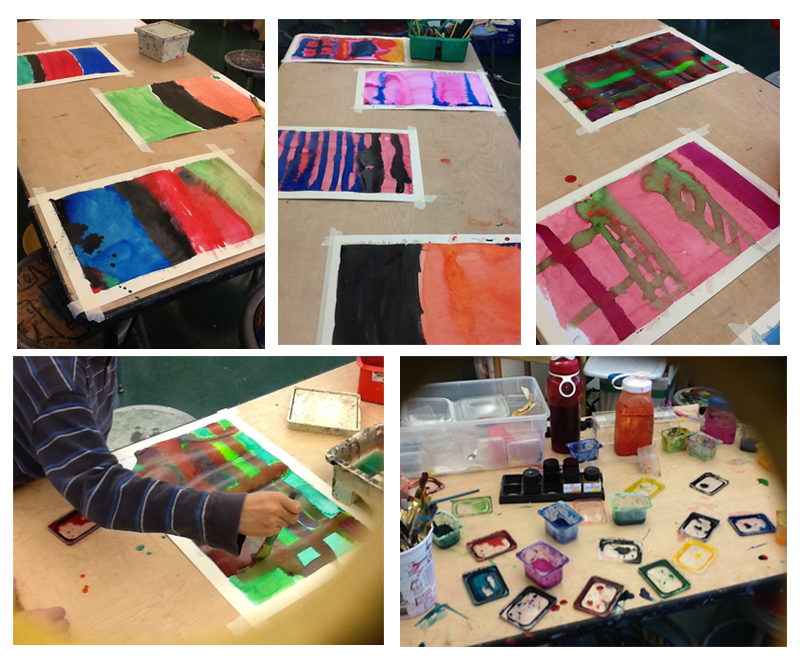Laurie Bellet
 Sometimes my world brings surprises, and so it was today. I had another article ready to go and then my 2nd grade came in, scheduled today to experience the art of Mark Rothko. Named Markus Rothkowitz at birth in Russia in 1903, he became Mark Rothko later in life. Trained traditionally, Rothko became famous later in life, for his vast fields of color that seem to pulsate, float, recede and come towards the viewer. Similar in some ways to the efforts of Yakov Agam, Rothko sought to engage the viewer in the art itself. The art is about Kavannah and a spiritual journey. Can students as young as 2nd grade enter this world? Absolutely!
Sometimes my world brings surprises, and so it was today. I had another article ready to go and then my 2nd grade came in, scheduled today to experience the art of Mark Rothko. Named Markus Rothkowitz at birth in Russia in 1903, he became Mark Rothko later in life. Trained traditionally, Rothko became famous later in life, for his vast fields of color that seem to pulsate, float, recede and come towards the viewer. Similar in some ways to the efforts of Yakov Agam, Rothko sought to engage the viewer in the art itself. The art is about Kavannah and a spiritual journey. Can students as young as 2nd grade enter this world? Absolutely!
Unlike in recent years I opted for paints as opposed to bleeding tissue paper (the lesson plan for which can be found at www.lbellet.wordpress.com). As with any art experience you undertake with students of all ages, please do the activity before you teach it.
When the students entered the room, I had the lights off to induce a quiet mood for the beginning. Prior to the class, I had used masking tape to secure the paper (12”X18” 140lb watercolor paper) to the table. This serves to keep the paper flat and, when removed gently will reveal a frame around the work. I gave a brief introduction including the definition of abstract expressionism, the use of art to convey emotion, and the idea of color fields. The children all closed their eyes and we took a journey inward to a beach, with a strip of sand (tan, pink, white, etc.), an expanse of ocean (blue, green, purple) and a breadth of sky (gray, light blue) . Then, take that vision and turn it into rectangles of color. After this, I introduced the idea of Rothko’s art as tefillah. I showed the students a YouTube video of the Rothko Chapel. [*Note —I substituted music from Debbie Friedman (z”l) and Sam Glaser for that of the video itself.]
The music continued and the painting commenced, with students envisioning their paper not only with colors but also with 2 or 3 rectangles/squares/lines. When ready, students came to me for their first color. For this layer, we used paints we had made from discarded watercolor markers which tend to be lighter than those I purchase. Students worked with flat brushes, painting first with water if they wanted an even lighter color tone. Students worked almost in silence. Some covered the entire paper; some left white areas for rectangles/squares/lines. (I limited them to 3 or 4 of these “fields”)
When they were done with their backgrounds, students came to me for their 2nd, 3rd and, for a few, a 4th color. For this work, students used Econoline Liquid Watercolors (Sargent Watercolor Magic and Colorations Liquid Watercolors will work well also) which are deeply saturated pigments. Since students need very little of these, I used droppers and put the colors into lids of baby food containers as students requested them. Some children used extra water to get feathered edges; others preferred more precise lines; some included a few ‘extras’. All worked with kavannah. Silently, they walked around the tables, savoring the art made by others. Sacred space had been created.


